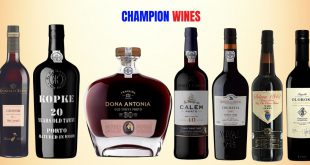 Depending on the youthfulness or more evolved state of a Chablis, the fruit spectrum includes green/yellow citrus, Granny Smith to Golden Delicious apples, green to ripening pineapples, lemon curd, taut keen minerality to sunbaked granite and other stones, and honey
Depending on the youthfulness or more evolved state of a Chablis, the fruit spectrum includes green/yellow citrus, Granny Smith to Golden Delicious apples, green to ripening pineapples, lemon curd, taut keen minerality to sunbaked granite and other stones, and honey
In my more than 45 years of having tasted white Burgundy and Chardonnay from around the world, there have been times when I have mistaken a New World Chard for a Burgundy.
I don’t, however, remember ever mistaking a New World Chardonnay for a Chablis.
The region and wine of the same name is that special.
Unoaked, Chablis is Chardonnay unplugged.
You taste everything from the grape and the earth, wind, and fire of Chablis.
The wine is as pure and pristine as a singer without any musical accompaniment.
Chablis is devoid of toasty/smoky/vanilla oak chips or staves to mar or compromise the fruit.
Chablis is the original Chardonnay!
Every fibre of the flavour and tension of Chablis is dragged out of the nourishment found in the Kimmeridgian* soil that is the bedrock of Chablis. Here, in the northernmost part of Burgundy, the cold cool climate gives the wine a zinging freshness even in the ripest vintages.
In much of the chalk/marl/limestone soil, fossils of shellfish are embedded.
The prehistoric seafood is part and parcel of the soil.
Most common is Exogyra Virgula, a small comma-shaped oyster prevalent during the Upper, and into the Middle, Kimmeridgian epoch.
 Every fibre of the flavour and tension of Chablis is dragged out of the nourishment found in the Kimmeridgian soil that is the bedrock of Chablis in the northernmost part of Burgundy
Every fibre of the flavour and tension of Chablis is dragged out of the nourishment found in the Kimmeridgian soil that is the bedrock of Chablis in the northernmost part of Burgundy
 Fossils of shellfish are embedded into the chalk/marl/limestone soil. Most common is Exogyra Virgula, a small comma-shaped oyster prevalent during the Upper, and into the Middle, Kimmeridgian epoch 150 million years ago
Fossils of shellfish are embedded into the chalk/marl/limestone soil. Most common is Exogyra Virgula, a small comma-shaped oyster prevalent during the Upper, and into the Middle, Kimmeridgian epoch 150 million years ago
Kimmeridgian is a geological age of the Upper Jurassic about 150 million years ago.
All of Chablis was once underwater and part of an ocean.
Over time – ever so gradually – it became covered by the material that today makes up its unique soil and subsoil.
The precipitation that falls over Chablis, penetrating into the soil – which the roots of the vines lap up to nourish the grapes – inevitably conveys traces of Kimmeridgian into the wine.
What this means is that even if you were to grow Chardonnay in an equally cold cool climate, it still will not taste of Chablis.
Chablis is just that special.
Chardonnay at its purest and most magnificent!!
*Kimmeridgian is named for the village of Kimmeridge on the Dorset coast of England where a similar soil is also found. The reason for the English name is because most of the early work on geologic time was done by geologists in England who used the names of local places where they discovered the types of soils.


